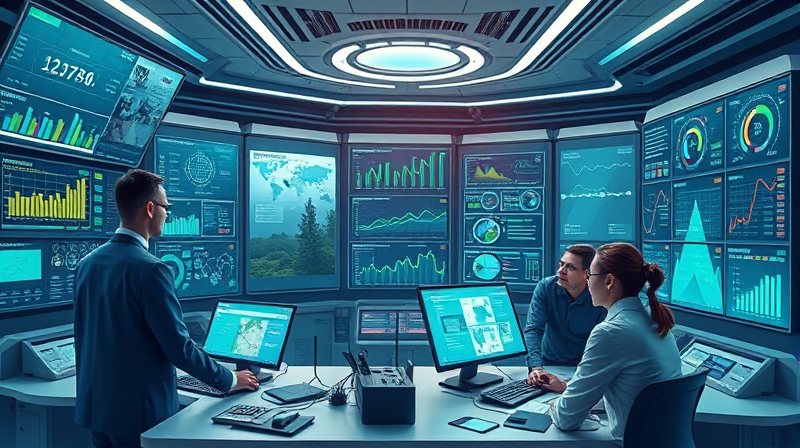In today’s rapidly evolving technological landscape, staying current with programs and ensuring the overall health of your systems is not just an option but a strategic necessity. Organizations across all sectors must adapt to continuous changes and emerging trends to remain competitive and efficient. As we venture through 2025, the integration of advanced technologies and innovative processes will redefine how maintenance and updates are managed.
This article explores key insights and strategies that provide a robust framework for keeping programs up-to-date and ensuring the health of systems. By embracing these practices, IT professionals and business leaders can drive performance improvements, minimize disruptions, and foster a culture of continuous progress.
Embrace Predictive Maintenance
Predictive maintenance is at the core of modern system management. Leveraging artificial intelligence (AI) and machine learning, this approach anticipates system or equipment failures before they occur. Advanced data analytics and integration with IoT devices empower organizations to take swift and effective action, reducing unplanned downtimes considerably.
Organizations that adopt predictive maintenance benefit from:
- Timely interventions that prevent costly breakdowns,
- Enhanced system reliability and extended lifespan of critical equipment, and
- Improved operational efficiency through data-driven decision making.
This continuous monitoring and proactive approach allow teams to concentrate on strategic improvements instead of just firefighting emergencies.
Prioritize Cybersecurity
As cybersecurity threats become progressively sophisticated, implementing robust defenses is more critical than ever. Organizations must move beyond basic compliance standards and invest in innovative security measures.
Cybersecurity must be integrated into every aspect of system management, especially in high-risk sectors such as healthcare. Some of the most effective measures include:
- Adopting advanced threat-detection tools, such as Endpoint Detection and Response (EDR) and Extended Detection and Response (XDR);
- Partnering with reliable vendors who prioritize security;
- Securing sensitive data with multi-factor authentication and frequent training of staff on cybersecurity best practices.
By taking these actions, organizations not only protect their assets but also build trust with customers and stakeholders.
Leverage AI and Automation
The potentials of AI and automation are reshaping the landscape of system maintenance. Automating mundane tasks allows IT professionals to devote more time toward solving complex issues and innovating further improvements.
In healthcare, for instance, AI-powered tools have proven to increase efficiency dramatically, saving valuable time for revenue cycle staff and bedside nurses. Automation streamlines workflows that traditionally consumed excessive time and resources.
This shift paves the way for a future where technology supports human expertise, creating an environment that is both efficient and resilient against rapid technological advancements.
Implement Comprehensive Asset Management
A robust asset management strategy is indispensable for maintaining system health. Tools like the Facilities Condition Index (FCI) provide critical insights into the current state of an organization’s assets.
Effective asset management involves:
- Prioritizing maintenance and repairs to avoid larger issues,
- Planning capital expenditures with greater accuracy,
- Extending asset lifespan through regular monitoring, and
- Making informed, data-driven decisions about resource allocation.
When organizations know the exact status of their assets, they can prioritize interventions and optimize their investments, ensuring that every component of the system is performing at its best.
Focus on Sustainability
The need for sustainable practices has never been more urgent. Organizations are now expected to balance operational excellence with environmental responsibility. Facility managers play a key role in achieving ambitious environmental goals.
Sustainability in maintenance is realized through practices that include energy efficiency audits and the adoption of green technologies. These sustainable methods not only reduce environmental impact but also often result in cost savings and improved operational efficiency.
By aligning system health initiatives with sustainability objectives, organizations create a harmonious balance between technology and nature, benefiting both the business and the planet.
Adopt Collaborative Maintenance Platforms
Modern maintenance strategies thrive on communication and collaboration. Collaborative maintenance platforms empower teams by offering real-time visibility into asset performance and maintenance schedules.
These platforms break down silos and facilitate smoother workflows by integrating data from various departments. They ensure that all stakeholders from IT professionals to facility managers stay connected, informed, and aligned towards common goals.
The streamlined communication leads to faster problem resolution and smarter decision-making, enhancing the overall agility of the maintenance process.
Invest in Continuous Learning
The dynamic nature of modern technology necessitates ongoing learning and professional development. Keeping abreast of new technologies and evolving best practices has become indispensable for IT professionals and system administrators.
Continuous learning not only improves individual performance but also boosts the overall quality of system management. Organizations that invest in training, workshops, and educational resources foster a culture of innovation and preparedness.
This investment in human capital ensures that teams are well-equipped to handle new challenges, introduce innovative solutions, and maintain the health of their systems amid rapid technological changes.
In conclusion, keeping programs current and ensuring system health is a multifaceted endeavor that calls for a proactive approach. Embracing predictive maintenance, prioritizing cybersecurity, leveraging AI and automation, implementing comprehensive asset management, focusing on sustainability, adopting collaborative platforms, and investing in continuous learning are all integral strategies for success in 2025 and beyond. These insights provide a road map for organizations eager to thrive amidst constant change.








